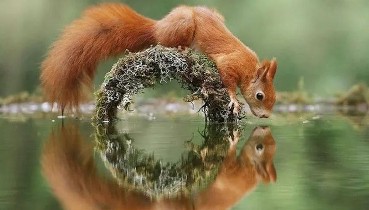
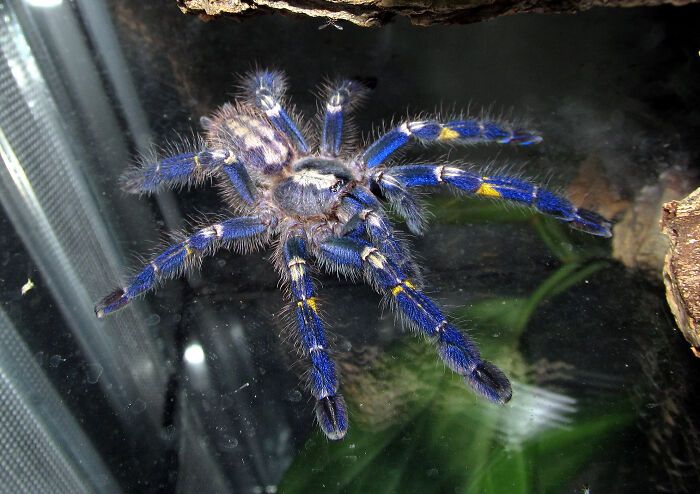
Peacock Tarantula (Poecilotheria Metallica)
Poecilotheria metallica, also known as the peacock tarantula,[1] is an Old World species of tarantula. It is the only blue species of the genus Poecilotheria. Like others in its genus it exhibits an intricate fractal-like pattern on the abdomen. The species' natural habitat is deciduous forest in Andhra Pradesh, in central southern India. It has been classified as Critically endangered by the IUCN.

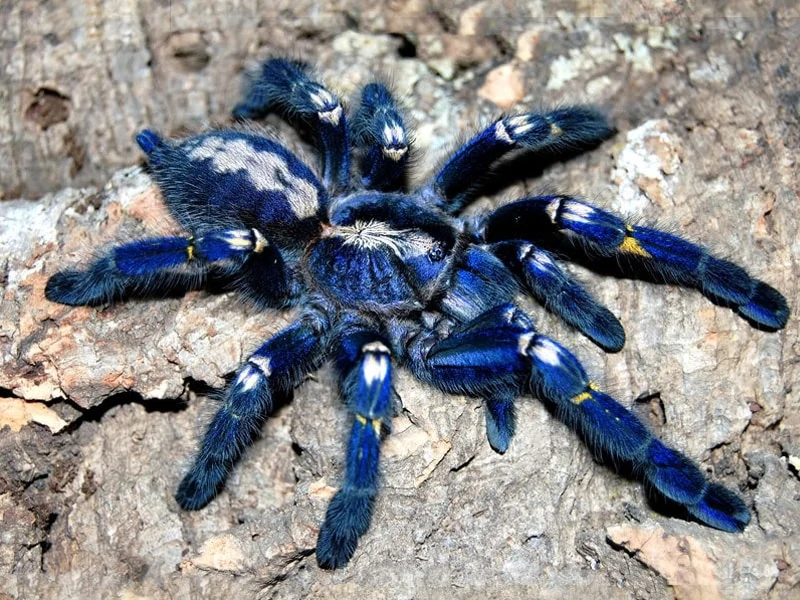
Poecilotheria metallica is found only in a small area of less than 100 square kilometres (39 sq mi), a reserve forest that is nonetheless highly disturbed. Surveys of adjacent forest have failed to observe this species. The type specimen was discovered in a railway timber yard in Gooty about 100 km southwest of its known range, but it is believed to have been transported there by train.[1]
Poecilotheria metallica's behavior parallels that of many arboreal spiders. In the wild, P. metallica lives in holes of tall trees where it makes asymmetric funnel webs. The primary prey consists of various flying insects. Spiders of this genus may live communally when territory, i.e. the number of holes per tree, is limited. The species is skittish and will try to flee first, and will also flee when light shines upon it, as it is a photosensitive species. Under provocation, however, members of the species may bite.[6]

There has never been a recorded human death from its bite. However, P. metallica's bite is considered medically significant, with venom that may cause intense pain, judging from the experience of keepers bitten by other spiders in the genus.[8][9] The vast majority are "dry bites," where no venom is injected into the handler. The mechanical effects of the bite can still be worrisome, as an adult's fangs can reach nearly 3/4 of an inch in length. P. metallica can move rapidly and may defend itself when cornered. Venom may produce a heart-rate increase followed by sweating, headache, stinging, cramping, or swelling. Effects can last for up to a week. However in extreme bites from the genus Poecilotheria, effects may still be felt months later.[10]
As with other tarantulas with blue hair, the vivid colors of P. metallica are produced by quasi-periodic perforated multilayer nanostructures.[11][12][13] Structural colours are usually highly iridescent, changing color when viewed from different angles. Some species of blue tarantulas have hairs with a "special flower-like" structure which may reduce iridescence.[14][15] Given that many tarantulas express nearly a full suite of opsins found in other colourful spiders with colour vision, blue colors could potentially function in mate-choice or contests for mates.[16][17]
Recommended Videos
 A man takes Photos of extremely rare White Baby Reindeer in Norway!89 views
A man takes Photos of extremely rare White Baby Reindeer in Norway!89 views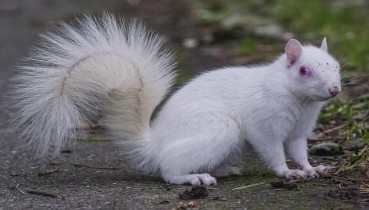 Photographer captures ultra-rare albino squirrel in snap he had wanted to take for two years146 views
Photographer captures ultra-rare albino squirrel in snap he had wanted to take for two years146 views-
Advertisements
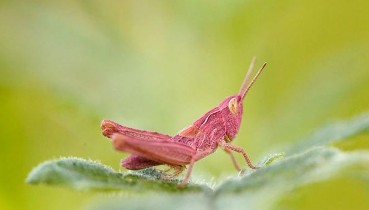 Photographer Captured A Pink Grasshopper8 views
Photographer Captured A Pink Grasshopper8 views 10 Bizarre Beauty Standards From Around The World465 views
10 Bizarre Beauty Standards From Around The World465 views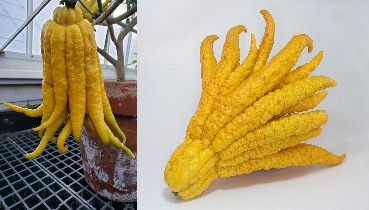 This Citron Called Buddha’s Hand Looks like a Giant Lumpy Lemon With Fingers and Smells Like Heaven51 views
This Citron Called Buddha’s Hand Looks like a Giant Lumpy Lemon With Fingers and Smells Like Heaven51 views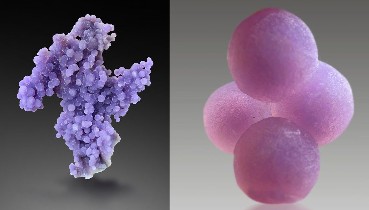 Rare Crystal From Indonesia Looks Like a Cluster of Grapes113 views
Rare Crystal From Indonesia Looks Like a Cluster of Grapes113 views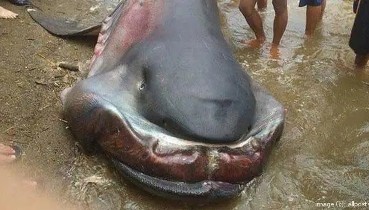 This Rare And Horrifying Megamouth Shark Washed Up On A Beach In The Philippines201 views
This Rare And Horrifying Megamouth Shark Washed Up On A Beach In The Philippines201 views Nature Reclaims Abandoned Chinese Fishing Village453 views
Nature Reclaims Abandoned Chinese Fishing Village453 views



